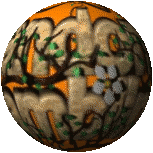Halloween still remains in the cycle of the year despite its very pagan origins. Celebrated over 2000 years ago by the Celts, more in anguish than in full cheerful abandonment. There are many beliefs entwined around the 31st October, all are to do with conjuring up the dead. Pagans threw their prayers in many directions but October brought the end of their year and it carried with it such powers as to summon the dead. Superstition was commonplace and so people were terrified on this special night. Many different ways of dealing with the worry of this emerged over the years.
Perhaps we should be wary of making it into a celebration when it may be more sensible for Halloween to be forgotten – it is sometimes said that ‘it is better to let the past stay in the past.’
The last day of October, ‘Halloween’ had long been forgotten and remained dormant in our history until around 1500 AD. The word ‘Hallow’ is a very old word that represents the meaning of ‘a saint’ and was therefore most probably used as Halloween, originally referred to as ‘all Hallows Eve’n’ was the day before ‘All Saints Day.’ All Saints Day was the first day of the Celtic New Year and was therefore embedded into the Celts way of life. The early Celts were afraid of the long dark period of time as nights became ever longer and the day light increasingly shorter. They believed that especially on the night before the New Year the barrier that kept the dead world away from the living world was especially thin and weak and that the stronger spirits could break through and leave their dead world to walk amongst the living. It became a custom for people to gather wood and build high fires which it was believed would help to keep the dead where they belonged and should any have escaped and be walking amongst the living, the fires would offer protection and would help to banish the escaped spirits away.



































 Solitary Canada goose
Solitary Canada goose
























































